How would you express yourself without verbs?
- The cat … on the mat.
- She … very happy about the promotion.
- They … to the store yesterday.
Something feels incomplete, doesn’t it?
The missing fragments give meaning to the sentences we speak, and these fragments are called verbs.
So what is a verb? These are parts of speech that give meaning to a sentence. Integrate them in the sentence and see the difference in meaning:
- The cat sleeps on the mat.
- She feels very happy about the promotion.
- They went to the store yesterday.
Those bolded words, sleeps, feels, and went, are verbs, and they’re what make these sentences complete and meaningful.
In this blog, we’ll explore everything about verbs—from their origin and definition to their types, forms, and usage in different sentence structures.
You’ll also learn about subject-verb agreement, modal and phrasal verbs, and see plenty of practical examples.
Let’s dive in.
Key Takeaways
- A verb is essential to every sentence. They express actions, states of being, or events. Without them, a sentence is incomplete.
- There are three core types of verbs. Action verbs show physical or mental activity. Linking verbs connect the subject to a description. Helping (auxiliary) verbs work with main verbs to form tenses or moods.
- Each verb has five main forms: base, past, past participle, present participle (-ing), and third-person singular.
- English has simple, perfect, progressive, and perfect progressive tenses across past, present, and future.
- Verbs can be transitive or intransitive. Transitive verbs need a direct object (“She threw the ball”), while intransitive verbs do not (“She sleeps”). Some verbs can be both, depending on context.
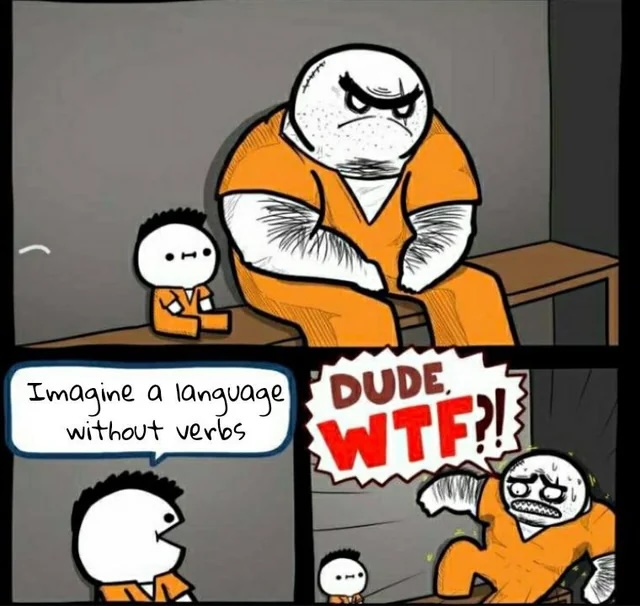
Definition of a Verb
Let’s start from the basics.
What is a verb?
A verb is a word that shows action, a state of being, or an event. It’s the part of a sentence that tells us what the subject does, is, or experiences.
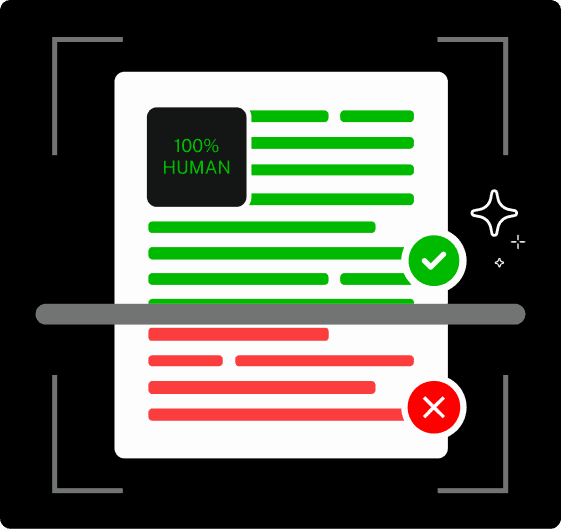
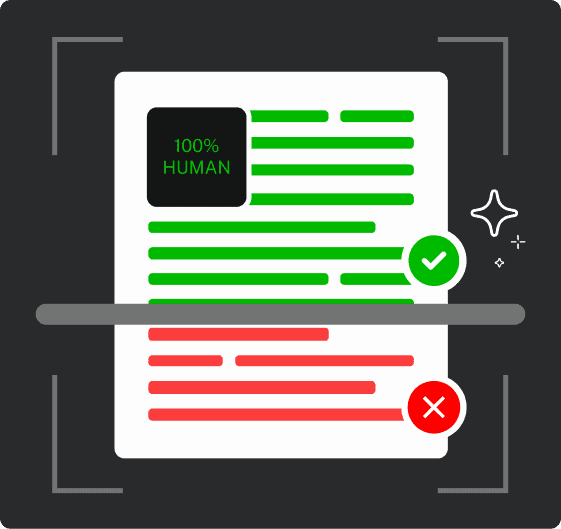
Never Worry About AI Detecting Your Texts Again. Undetectable AI Can Help You:
- Make your AI assisted writing appear human-like.
- Bypass all major AI detection tools with just one click.
- Use AI safely and confidently in school and work.
In grammar, this is called the predicate. Without it, a sentence can’t function.
Here are some of the verb examples:
- She runs. (action)
- He seems tired. (state of being)
- They have finished. (event, with an auxiliary verb)
The word verb comes from the Latin “verbum”, which means “word.” It shows just how central verbs are to language.
No verb = No sentence
You might have a subject, an object, or an adjective, but without a verb, your thought is incomplete. For example:
- The cat.
- Very happy.
- In the garden.
All of these feel like fragments. Now compare this example:
- The cat sleeps.
- She is very happy.
- They played in the garden.
Just one verb gives structure and meaning.
Verbs come in different types.
Action verbs like “run,” “eat,” or “write” show what someone is doing.
Linking verbs like “be,” “seem,” or “become” connect the subject to more information.
And auxiliary verbs like “have,” “will,” or “do” help form tenses and questions.
Main Types of Verbs
Let’s break down different types of verbs:
- Action Verbs
These are verbs that show what someone does either physically or mentally. So there are two subtypes of action verbs:
- Physical actions: jump, run, swim, write
- Mental actions: think, believe, understand
To identify action verbs, ask → “What is the subject doing?”
What is a verb example for action verbs?
- She calculated the mortgage payment. (mental action)
- He sprinted to catch the bus. (physical action)
Action verbs add movement and energy. They’re the engine behind storytelling and dynamic writing.
- Linking Verbs
What is a linking verb? These verbs don’t show action. Instead, they connect the subject to more information about itself. Common linking verbs include:
- Forms of be (am, is, are, was, were, being, been)
- Seem, appear, become, feel, look, sound, taste, smell, grow, remain, stay
Test this: Replace the verb with an equals sign (=). If it still makes sense, it’s a linking verb. Example:
- The soup tastes delicious. → The soup = delicious.
- She looks tired. → She = tired.
Common mix-up:
She looks quickly. (Action)
She looks tired. (Linking)
The same verb can be linking or action depending on context.
- Helping (Auxiliary) Verbs
What is a helping verb? These verbs support the main verb to show tense, mood, or emphasis.
They come in two categories: Primary Auxiliaries and Modal Auxiliaries.
1 – Primary auxiliaries help form tenses, negatives, questions, and passive voice. They support the main verb but don’t carry meaning on their own. There are three primary auxiliary verbs:
- Be – is, am, are, was, were, being, been
- She is working.
- The report was written.
- Have – has, have, had
- They have left.
- He had already eaten.
- Do – do, does, did
- Do* you know the answer?*
- She did call you.
2 – Modal auxiliaries express ability, possibility, permission, necessity, obligation, or intention.
They change the mood of the main verb rather than its tense. Here are the helping verb example for modals:
- Can, could – ability or possibility
- She can swim.
- She can swim.
- May, might – permission or uncertainty
- We might leave soon.
- We might leave soon.
- Must, shall, should – necessity or advice
- You must finish the form.
- You should rest.
- Will, would – future or conditional
- I will call you.
- He would help if asked.
- Ought to – moral duty or expectation
- You ought to apologize.
- Transitive vs. Intransitive Verbs
This distinction between the two is all about whether the verb needs a direct object.
Transitive verbs require a direct object. Example:
- She threw the ball. (Threw what? The ball.)
Intransitive verbs: complete on their own. Example:
- The baby sleeps. (No object needed.)
Same verb, different use:
- I read books. (transitive)
- I read daily. (intransitive)
To identify both, ask “what?” or “whom?” after the verb. If there’s an answer, it’s transitive.
- Regular vs. Irregular Verbs
When we talk about regular and irregular verbs, we’re focusing on how verbs change in the past tense and past participle forms.
1 – Regular verbs follow a consistent pattern by adding -ed to form both the past tense and past participle. Examples of regular verbs:
- walk → walked → walked
- jump → jumped → jumped
- clean → cleaned → cleaned
These are predictable and easy to learn because they follow the same rule.
2 – Irregular verbs do not follow the standard -ed pattern. Instead, they change forms in unpredictable ways, often involving a vowel change or no change at all.
Example of irregular verbs:
- go → went → gone
- sing → sang → sung
- cut → cut → cut
There’s no single rule to predict how an irregular verb will change, so they need to be memorized.
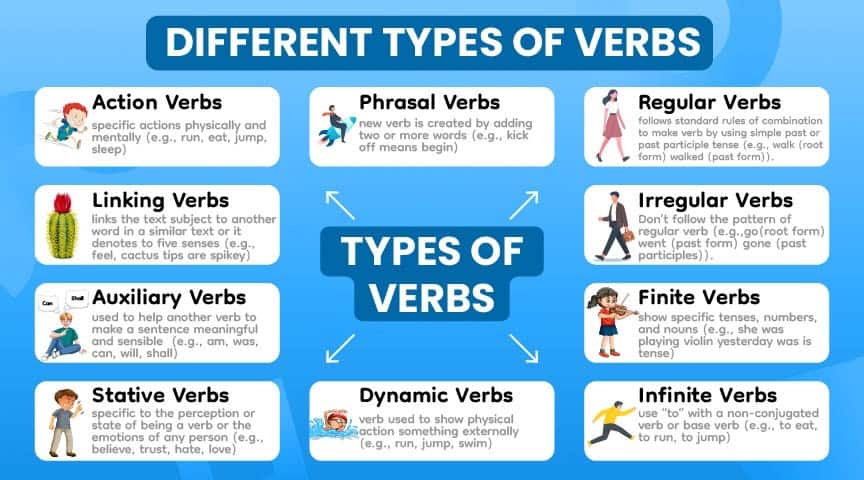
There are around 200 common irregular verbs in English.
You can make memorization easier by grouping verbs that follow similar changes:
- ring → rang → rung
- drink → drank → drunk
- swim → swam → swum
- begin → began → begun
Verb Tenses Explained
Tenses show when an action happens (past, present, or future) and whether it’s ongoing, completed, or connected to another event.
Here’s a breakdown of the core tense types and how to use them correctly.
- Present, Past, and Future
- Simple Tenses
These are the foundation of all tense systems.
| Tense | Example | Usage |
| Present Simple | I walk | Habitual actions, facts (“I walk to school every day.”) |
| Past Simple | I walked | Completed actions in the past (“I walked home yesterday.”) |
| Future Simple | I will walk | Actions that will happen (“I will walk tomorrow.”) |
Time markers help signal the correct tense:
- every day → present
- yesterday → past
- tomorrow → future
Common Error: Saying “I walked to school every day” (past) when you mean it’s a habit (present).
- Perfect and Progressive Tenses
- Perfect Tenses
These show that an action is completed or connected to another point in time.
| Tense | Example | When to Use |
| Present Perfect | I have finished | Past action with present importance |
| Past Perfect | I had finished | One past action before another |
| Future Perfect | I will have finished | Action completed before a future moment |
- Progressive (Continuous) Tenses
These show that an action is ongoing.
| Tense | Example | Meaning |
| Present Progressive | I am walking | Action happening now |
| Past Progressive | I was walking | Ongoing action in the past |
| Future Progressive | I will be walking | Ongoing action in the future |
- Perfect Progressive Tenses
These combine both ideas: the action is ongoing and connected to another time.
- Present Perfect Progressive – I have been walking
- Past Perfect Progressive – I had been walking
- Future Perfect Progressive – I will have been walking
- Tense Consistency in Writing
Rule of thumb in tense consistency: Don’t shift tenses without a clear reason. Example of verbs in a sentence:
Incorrect: I walked to the store and buy milk. (Mixes past with present — confusing)
Correct: I walked to the store and bought milk. (Consistent past)
Correct: He said he would call when he arrived. (Future in the past — correct use)
Correct: Yesterday I remembered how she always says “you’ve got this.”
This is a valid shift because of past events with quoted present habits.
Still unsure if your tense is on point? Still saying “I walked to school every day” when you mean “I walk to school every day”?
That one tense slip confuses your meaning and your teacher notices.
Ask AI. This AI tool is your non-judgemental grammar friend right in your pocket. It is ready to double-check your verbs before they cost you points.

Verb Forms and Conjugation
Here’s a clear breakdown of verb forms, their uses, and how to avoid common mistakes.
- Base Form, Past, and Past Participle
Every verb has core forms that change depending on tense and grammatical structure:
| Form | Definition | Example (Go) | Example (Study) |
| Base Form | The dictionary form (infinitive without “to”) | go | study |
| Past Tense | Shows a completed action in the past | went | studied |
| Past Participle | Used with helping verbs for perfect tenses/passive | gone | studied |
| Present Participle | Ends in -ing, used in progressive tenses and as adjective | going | studying |
| Third Person Singular | Base + -s/-es for “he/she/it” in present tense | goes | studies |
These are often called the five principal parts of a verb. You need to know them to form correct tenses and sentence structures.
- Third-Person Singular Form
When the subject is he, she, or it, verbs take on a different form in the present tense:
- Regular Rule: Add -s
→ He runs, She works, It rains - Add -es if the verb ends in -ch, -sh, -x, -s, -z, or -o
→ She watches, He fixes, It goes - Irregular Case:
→ Have becomes has
→ Do becomes does
Correct: She plays guitar.
Wrong: She play guitar.
A common error is dropping the -s for third-person subjects. Always double-check.
- Present and Past Participles in Use
The present participle is formed by adding -ing to the base verb (e.g., run → running). It has three primary uses:
- Used in Progressive Tenses
It helps form continuous (progressive) tenses that show ongoing actions.
- Example: I am eating.
(The action is happening right now.)
- Functions as a Gerund (a Noun)
When a verb ends in -ing and acts as a subject or object, it becomes a gerund, not a participle.
Example: Swimming is fun.
(“Swimming” is the subject of the sentence—used as a noun.)
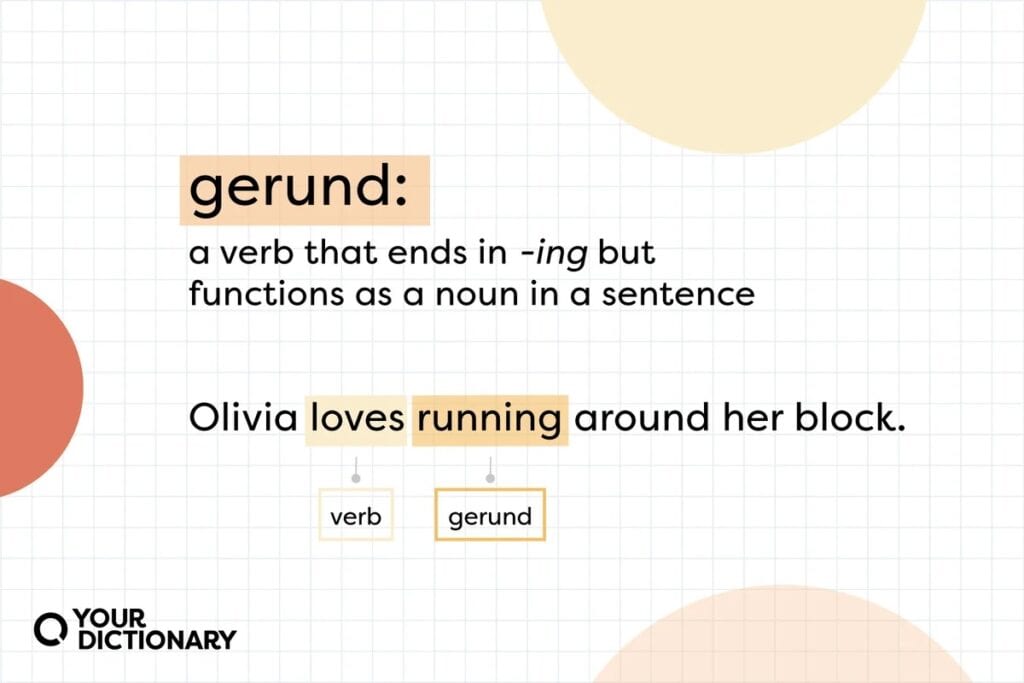
- Acts as an Adjective
The present participle can also describe a noun, giving more detail.
- Example: The running water was cold.
(“Running” describes the type of water—used as an adjective.)
The past participle is the third form of the verb (e.g., eat → eaten, break → broken, walk → walked). It has three key uses:
- Used with Perfect Tenses
It pairs with has/have/had to indicate completed actions.
- Example: She has eaten.
(The action was completed, with relevance to the present.)
- Used in Passive Voice
It’s used to form the passive voice—where the subject receives the action.
- Example: The book was written by her.
(“Written” shows what happened to the book.)
- Functions as an Adjective
Like the present participle, it can also describe nouns.
- Example: The broken vase was expensive.
(“Broken” describes the vase—used as an adjective.)
What’s the Difference Between Gerund and Present Participle?
| Sentence | Function | Explanation |
| Swimming is fun | Gerund (Noun) | “Swimming” is the subject |
| I am swimming | Present Participle (Verb) | “Swimming” is part of the verb phrase (progressive tense). |
If you need clarity on verb agreement, participle usage, or tense issues, use AI Chat.
Whether it’s figuring out “has gone” vs. “had gone” or “breaking” vs. “broken,” it handles grammar-specific questions in seconds.

Subject-Verb Agreement
Subject-verb agreement means the verb must match the subject in number:
- Singular subject → singular verb
- Plural subject → plural verb
Rules and Examples
Rule 1: A singular subject takes a singular verb; a plural subject takes a plural verb.
Example:
- The dog runs fast. (Singular subject → singular verb)
- The dogs run fast. (Plural subject → plural verb)
Rule 2: Phrases between subject and verb do not affect agreement.
Example:
- The basket of apples is on the table.
(“Basket” is singular; “of apples” is a modifier)
Rule 3: Compound subjects joined by “and” take a plural verb.
Example:
- Tom and Jerry are best friends.
Rule 4: With “either/or” and “neither/nor,” the verb agrees with the subject closest to it.
Example:
- Neither the teacher nor the students are ready.
- Either the players or the coach is responsible.
Common Agreement Mistakes
Rule: Collective nouns take a singular verb when the group acts as one unit.
Example:
- The team is winning the match.
Rule: Collective nouns take a plural verb when referring to individuals within the group.
Example:
- The team are arguing among themselves.
Rule: In sentences starting with “there” or “here,” the verb agrees with the subject that follows.
Example:
- There is a problem with the report.
- Here are the documents you asked for.
Rule: Amounts and measurements take a singular verb when considered as a whole.
Example:
- Five hundred dollars is a lot of money.
Rule: Titles of books, movies, and works take a singular verb—even if they look plural.
Example:
- “The Chronicles of Narnia” is a fantasy series.
- Special Cases: Indefinite Pronouns, Inverted Sentences
Indefinite pronouns have specific agreement rules.
- Always Singular: each, everyone, either, neither, somebody.
Example: Everyone is here.
- Always Plural: both, few, many, several
Example: Many are missing. - Depends on Context: all, any, some, none, more, most
Example 1: All of the water is gone. (uncountable)
Example 2: All of the cookies are gone. (plural)
In questions, ensure the verb agrees with the subject—even when the subject follows the verb. Example:
- Are your friends coming?
- Is your brother coming?
What Are Modal Verbs?
Modal verbs are auxiliary verbs used to express ability, possibility, permission, necessity, or advice.
Examples:
can, could, may, might, must, shall, should, will, would, ought to
Key Characteristics:
- No -s form: You say “He can swim,” not “He cans swim.”
- No infinitive: You don’t say “to must.”
- No participles: Modals don’t have -ing or -ed forms.
Functions with Examples:
- Ability: I can swim.
- Permission: May I leave?
- Possibility: It might rain later.
- Necessity/Obligation: You must wear a seatbelt.
- Advice: You should drink more water.
- Politeness levels:
- Can I borrow your pen? (casual)
- May I borrow your pen? (formal)
What Is a Phrasal Verb?
A phrasal verb is a main verb + one or more particles (prepositions or adverbs) that form a new meaning different from the original verb.
There are two main types of phrasal verbs:
- Separable Phrasal Verbs
You can separate the verb and the particle.
- Turn off the light = Turn the light off
- Put on your shoes = Put your shoes on
- Inseparable Phrasal Verbs
The verb and particle stay together.
- Look after the baby (not look the baby after)
- Run into an old friend
Examples of Verb Phrases:
- get up
- give up
- take off
- put on
- look forward to
- run out of
The meanings often can’t be guessed from the words alone.
- “Give up” means to quit, not literally “give” or “up.”
Examples of Verbs in Sentences
Here are some of the verb examples in sentences:
- Modal Verbs
- He can solve complex equations.
- You should drink more water.
- We might arrive late tonight.
- Phrasal Verbs
- She gave up junk food last year.
- Can you look after my dog?
- We ran out of coffee.
- Action Verbs
- She paints landscapes.
- They solved the puzzle.
- He imagined a different outcome.
- Linking Verbs
- The soup smells delicious.
- He became a doctor.
- It seems difficult at first.
- Helping Verbs
- I have finished my homework.
- They are watching a movie.
- We should have left earlier.
- Transitive Verbs
- She reads books every night.
- They built a house.
- He answered the question.
- Intransitive Verbs
- She sleeps peacefully.
- The baby cried.
- They arrived late.
Join thousands of professionals using our AI Detector and Humanizer—available below.
Conclusion
Verbs are everywhere.
They’re in every sentence you speak, every thought you express, and every story you tell.
Without them, language would crumble into meaningless fragments.
Think about it:
- How would you describe your day without action verbs like “walked,” “ate,” or “laughed”?
- How would you express feelings without linking verbs like “felt” or “seemed”?
- How would you talk about future plans without helping verbs like “will” or “should”?
In this blog, you’ve read everything you needed to know about verbs. What are verbs, the different types of verbs from simple action words to complex modal constructions, and multiple examples of verbs.
Verbs are the heartbeat of language. Master this part of speech to clarify exactly what you mean.
Want to make sure your writing sounds natural, polished, and human?
Use Undetectable AI to refine and humanize your content, effortlessly. Try it today.
